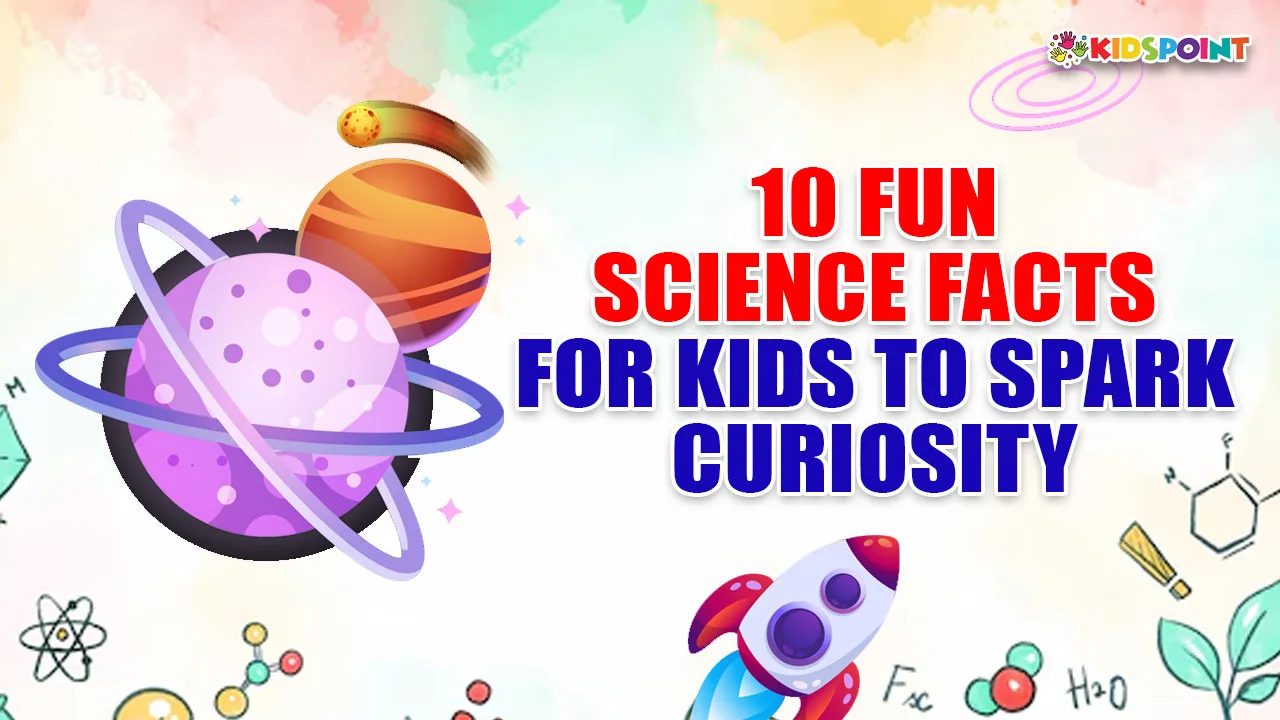Science is the key to unlocking the mysteries of the universe, from the tiniest particles to the vastness of space. Teaching kids fascinating science facts not only fuels their curiosity but also helps them develop critical thinking and problem-solving skills. At The Kids Point, we believe in nurturing inquisitive minds by sharing exciting information that makes learning fun. Science surrounds us every day, shaping the air we breathe, the technology we use, and even the animals we see. By understanding these exciting truths, kids can begin to appreciate the beauty of the natural and scientific world around them. Encouraging curiosity in children helps them embrace exploration and prepares them for a future where knowledge is their greatest tool. Here are 10 incredible science facts to inspire awe and wonder in kids.
Fire Ants Build Rafts to Survive Floods
Fire ants are small but mighty! When their habitat floods, they work together to form living rafts by linking their bodies. This teamwork keeps the entire colony afloat, ensuring their survival. These rafts can even carry the queen ant safely, showcasing the remarkable ability of ants to adapt to challenging environments. You can show kids how teamwork makes anything possible by replicating this idea with floating objects at home.
Glass Frogs: The Transparent Marvels
Meet the glass frogs, fascinating amphibians with transparent skin that allows you to see their internal organs. Found in Central and South America, these frogs use their see-through appearance as camouflage, blending seamlessly with their surroundings to avoid predators. Kids can explore this concept with a magnifying glass to observe how transparency and light interact in nature.
Light Travels Faster Than Anything Else
Imagine this: light moves so quickly that it could travel around Earth 7.5 times in just one second! The speed of light, at approximately 299,792 kilometers per second, is the ultimate speed limit in the universe. This amazing fact introduces kids to the concept of light speed and sets the stage for fun activities, like using mirrors to observe how light bounces around a room.
Trees Breathe Through Photosynthesis
It’s easy to think that only animals breathe, but trees and plants do too! Through photosynthesis, they absorb carbon dioxide, convert it into oxygen, and release it into the air. This process is why forests are known as Earth’s lungs. A hands-on experiment where kids observe bubbles forming on plant leaves submerged in water can illustrate this life-sustaining process.
The Stars We See Are from the Past
When we gaze at the night sky, we’re actually looking into the past. Light from distant stars takes thousands of years to reach us, meaning some stars you see tonight might no longer exist. Explaining this phenomenon with diagrams and star maps can spark kids’ interest in astronomy. Encourage stargazing nights to fuel their wonder about space!
Sea Otters Hold Hands While Sleeping
Sea otters are not only adorable but also incredibly resourceful. To keep from drifting apart while they rest, they hold hands or wrap themselves in kelp, creating a floating safety net. This fun fact teaches kids about animal behavior and the importance of bonding, even in the animal kingdom. Add a fun craft activity where kids create their own sea otter puppets.
Tornadoes Exist on the Sun
While we think of tornadoes as violent weather events on Earth, they also happen on the Sun—on a much larger scale! These solar tornadoes can reach speeds of up to 300,000 kilometers per hour, fueled by the Sun’s magnetic field. Exploring solar phenomena introduces kids to the vast and powerful forces at work in our universe.
Bees Can Recognize Human Faces
Honeybees are smarter than they appear. Research has shown that bees can learn to recognize human faces by remembering specific patterns. This surprising talent highlights the intelligence of these pollinators. Kids can try mimicking this behavior by spotting and memorizing patterns in everyday objects, making it a fun game.
The Human Brain Never Stops Working
Even while we sleep, our brains are working hard, generating electrical activity to keep our bodies functioning. In fact, your brain produces enough electricity to power a small light bulb. This incredible fact shows just how important the brain is. Fun activities like brain teasers or simple circuit-building projects can emphasize its capabilities.
The Earth’s Core Is as Hot as the Sun’s Surface
The Earth’s core is an extreme environment, with temperatures reaching as high as 5,500 degrees Celsius—about the same as the Sun’s surface. Kids can compare this with everyday objects like an oven to imagine how intense this heat really is. Teaching them about layers of the Earth makes the learning experience even more interactive.
Why Science Facts Are Important for Kids
Sharing fun science facts is more than just entertainment; it cultivates a deeper understanding of the world and encourages children to ask questions. Each fact introduces new concepts that can lead to hands-on experiments, outdoor explorations, and discussions about larger topics like environmental conservation or space exploration.
How to Keep the Curiosity Alive
Here are a few ways to build on these amazing facts:
- Hands-On Experiments: Simple DIY activities, like growing a plant or building a small raft, help kids connect theory with practice.
- Interactive Learning Tools: Apps, educational videos, and science kits bring abstract concepts to life.
- Encourage Exploration: Take your kids to science museums, planetariums, or outdoor parks where they can observe science in action.
At The Kids Point, we aim to nurture children’s love for learning by making science approachable, fun, and awe-inspiring. By exploring science facts, kids gain a deeper understanding of how the world works, fostering curiosity at every step. Whether through hands-on experiments, interactive tools, or natural exploration, learning science can be a joyful adventure. Stay curious, embrace wonder, and remember—every question is a step toward a new discovery!


